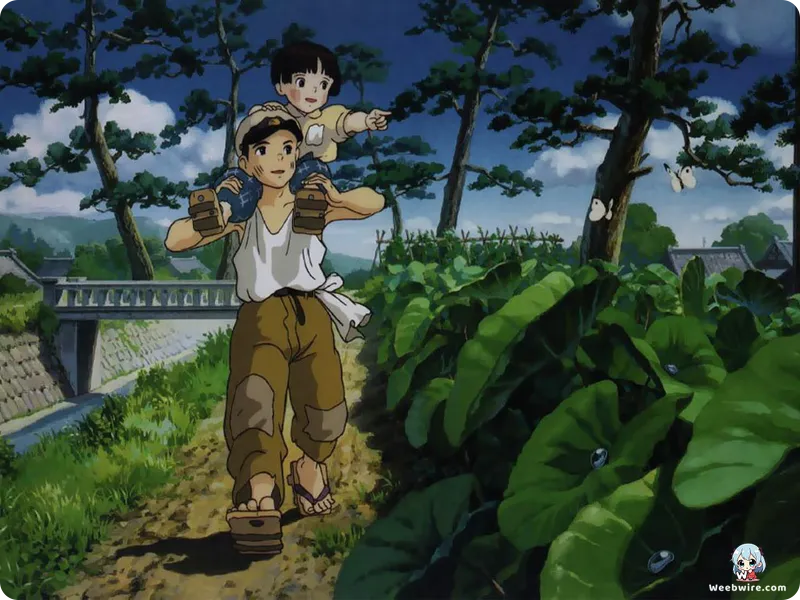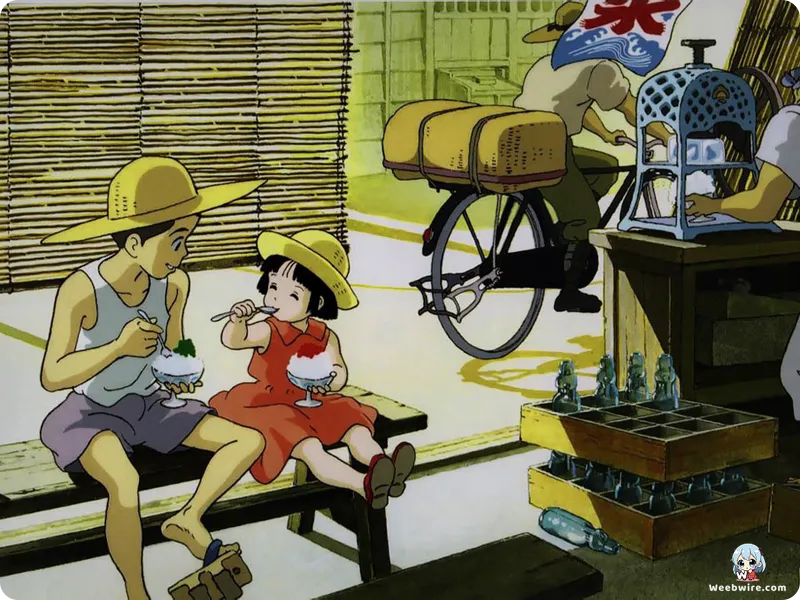The Untold Story: Unveiling Lesser-Known Realities Behind Studio Ghibli's 'Grave of the Fireflies'

Studio Ghibli is renowned for its captivating narratives, often brimming with magic, joy, and unwavering hope. Yet, nestled within its celebrated filmography stands a singular, profoundly moving work that challenges these conventions: Isao Takahata's 1988 masterpiece, Grave of the Fireflies. This animated drama, while globally lauded for its artistic brilliance, is equally recognized for its harrowing realism, presenting an unvarnished look at the devastating human toll of war. Beyond its universally heartbreaking storyline, the film is rich with intriguing, often overlooked details that illuminate its genesis, profound impact, and enduring legacy in cinematic history.
An Unconventional Release Strategy
One of the most remarkable and perhaps counter-intuitive decisions surrounding Grave of the Fireflies was its unconventional release strategy. In a move that appears almost audacious by today's standards, the film premiered as a double feature alongside Hayao Miyazaki's whimsical and optimistic My Neighbor Totoro. This strategic pairing, orchestrated by Studio Ghibli and its distributor Tokuma Shoten, was a calculated gamble. My Neighbor Totoro was initially perceived as a niche offering for younger audiences, prompting concerns among executives about its solo box office potential. By coupling it with the critically acclaimed, albeit somber, Grave of the Fireflies, they aimed to attract a broader demographic, hoping the latter would draw adult viewers who might then introduce their families to Totoro. This unprecedented juxtaposition of pure childhood innocence with the brutal realities of wartime tragedy forged an unparalleled cinematic experience, showcasing the nascent Studio Ghibli's extraordinary artistic breadth and ambition.
Rooted in History and Personal Tragedy
At its narrative core, Grave of the Fireflies is a powerful adaptation of Akiyuki Nosaka's 1967 semi-autobiographical short story. Nosaka himself was a survivor of the horrific 1945 Kobe air raids, an experience that left indelible scars and tragically claimed the life of his younger sister due to malnutrition. Isao Takahata, as the film's director, felt a profound moral imperative to faithfully render Nosaka's agonizing account. He embarked on meticulous historical research, striving for absolute precision in depicting the devastation of wartime Japan, from the relentless firebombing tactics to the daily struggles of rationing and the gradual erosion of societal order. This unwavering commitment to realism ensures that every frame, every meticulously rendered detail, resonates with profound historical authenticity, transforming the film into not merely a story, but a vital historical document.

Takahata's Nuanced Message
A lesser-known, yet crucial, insight concerns Takahata's personal interpretation of the film's overarching message. While a significant portion of its audience perceives Grave of the Fireflies as a quintessential anti-war declaration, Takahata himself clarified that this was not his primary intention in the traditional sense. Instead, he envisioned it as a poignant exploration of individual failure to adapt to the catastrophic breakdown of social order during conflict, specifically highlighting the tragic choices made by siblings Seita and Setsuko. He underscored that the film critiques the children's burgeoning pride and fierce independence, particularly Seita's stubborn refusal to seek assistance or compromise, which ultimately precipitates their tragic demise. Takahata aimed to illustrate the dire consequences of 'living selfishly' amidst a profound crisis, emphasizing how such personal decisions, amplified by the brutal backdrop of war, can culminate in unspeakable tragedy. This nuanced perspective transcends simplistic 'war is bad' narratives, compelling viewers to engage in deeper reflection on the complexities of human nature under extreme duress.
A Haunting Narrative Structure
The very narrative structure provides an essential detail often overlooked during a first viewing. The story is famously recounted through the spectral perspective of Seita's ghost, who narrates his and Setsuko's final days. This immediate revelation of their heartbreaking fate establishes a somber, reflective tone from the outset. The opening scene, where Seita laments his own death in a bustling train station, instantly informs the audience of the inevitable outcome. This artistic choice skillfully removes any false hope, allowing viewers to concentrate on the 'how' and 'why' of their suffering rather than being ensnared by suspense. This unique spectral narration significantly amplifies the film's melancholic power and emotional resonance.
Symbolism of the Sakuma Drops Tin
The iconic Sakuma Drops candy tin, a recurring and deeply symbolic motif throughout the film, carries immense emotional weight. Initially serving as a beacon of childhood joy and a fleeting comfort amidst their escalating despair, the humble tin gradually transforms into a poignant vessel for their dwindling hopes and, ultimately, for Setsuko's ashes. This seemingly innocuous object evolves into a powerful metaphor for shattered innocence, the fragility of life, and the brutal, inescapable reality of their circumstances. Its persistent presence acts as a constant, heartbreaking reminder of what once was and what tragically could have been.
Unwavering Realism
In stark contrast to many Studio Ghibli productions, which frequently incorporate elements of fantasy or magical realism, Grave of the Fireflies is firmly rooted in stark, unyielding realism. Absent are the whimsical talking animals, gravity-defying castles, or benevolent spirits; instead, the film confronts the audience with the raw, harsh realities of wartime survival. This deliberate exclusion of fantastical elements powerfully underscores the film's unwavering commitment to depicting the brutal truth of conflict without offering any escapist fantasy. It stands as a testament to Studio Ghibli's artistic courage and its willingness to explore the full spectrum of human experience, even venturing into its darkest, most challenging corners.
The Ephemeral Fireflies
Finally, the profound symbolism of the fireflies themselves is intricately woven into the film's thematic tapestry. These delicate creatures, with their ephemeral beauty and fleeting luminescence, serve as a poignant mirror to the tragically short, fragile lives of Seita and Setsuko. Their brief, luminous existence against a backdrop of overwhelming darkness becomes a powerful metaphor for the children's fleeting moments of joy and hope, constantly threatened by the encroaching despair of their situation. The fireflies' light, though transient, offers a momentary solace, much like the brief respite the siblings find in their isolated existence, before inevitably fading into the profound and final night. Grave of the Fireflies endures as a vital cornerstone of cinematic history, celebrated not only for its devastating emotional impact but also for the unparalleled depth of its storytelling and the intricate layers of meaning embedded within its tragic beauty.
Credits
Grave of the Fireflies
Author
Akiyuki Nosaka
Cover Art
Isao Takahata
Studio
Studio Ghibli
Publisher
Shinchosha
Producers





